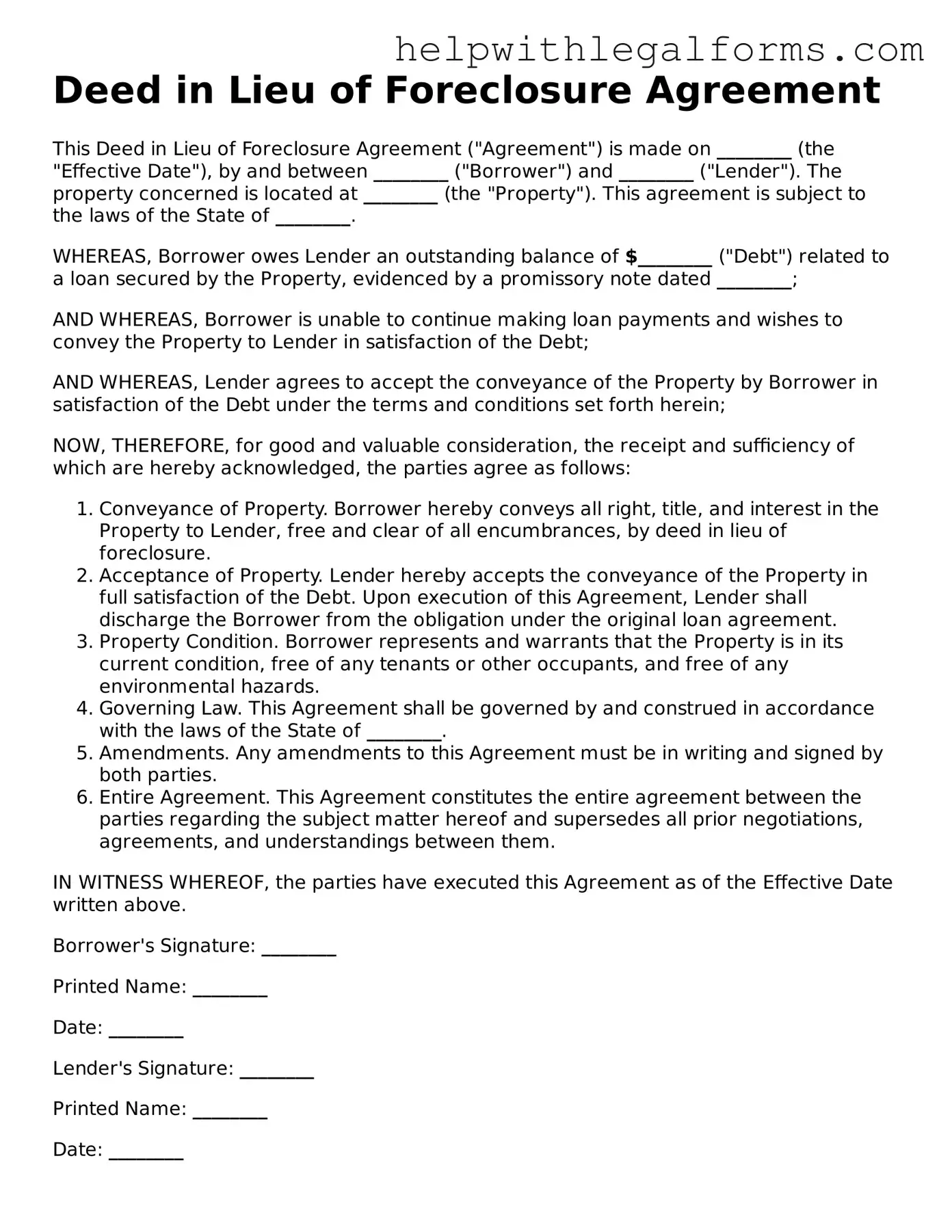What is a Deed in Lieu of Foreclosure?
A Deed in Lieu of Foreclosure is a legal document in which a homeowner voluntarily transfers ownership of their property to the lender to avoid foreclosure. This means instead of the lender going through the lengthy and costly process of foreclosing on the property, the homeowner agrees to give up their rights to the property, effectively bypassing the foreclosure process.
When should a homeowner consider a Deed in Lieu of Foreclosure?
Homeowners might consider a Deed in Lieu of Foreclosure when they are unable to make mortgage payments and foresee no viable way to continue doing so. It's often viewed as a last resort after options like loan modifications or selling the home have been explored and deemed unfeasible.
What are the benefits of a Deed in Lieu of Foreclosure for the homeowner?
For the homeowner, a Deed in Lieu of Foreclosure can reduce the emotional and financial stress of going through a foreclosure. It usually results in a less severe credit impact than a foreclosure and can sometimes include negotiations that absolve the homeowner of any further financial obligations related to the mortgage.
Are there any drawbacks to a Deed in Lieu of Foreclosure?
Yes, there are drawbacks. Accepting a Deed in Lieu of Foreclosure can still negatively impact a homeowner's credit score, though typically less than a foreclosure would. Additionally, not all lenders agree to a Deed in Lieu of Foreclosure, and there may be tax implications, as the debt relief could be considered taxable income.
How does a Deed in Lieu of Foreclosure affect a homeowner's credit score?
The impact on a homeowner's credit score can vary, but a Deed in Lieu of Foreclosure generally results in a significant negative mark. However, this mark is often less damaging than a foreclosure record. The homeowner's credit history leading up to the deed transfer also plays a significant role in the overall impact.
What steps are involved in the process of a Deed in Lieu of Foreclosure?
The process typically begins with the homeowner contacting the lender to express interest in a Deed in Lieu of Foreclosure. Documentation proving the homeowner's financial hardship is required. The lender then assesses the property value and checks for any secondary liens. If the lender agrees to proceed, both parties will work out the terms, and the homeowner will transfer the property title to the lender.
Can a lender refuse a Deed in Lieu of Foreclosure?
Yes, a lender can refuse a Deed in Lieu of Foreclosure. The decision often depends on whether the lender believes this option is in their best financial interest. Factors include the current value of the property, the amount owed on the mortgage, and the likelihood of recouping their investment through a foreclosure auction.
Is a homeowner liable for any outstanding mortgage balance after a Deed in Lieu of Foreclosure?
It depends on the terms negotiated with the lender. In some cases, the lender may agree to forgive any outstanding balance on the mortgage, known as a "deficiency waiver." However, without such an agreement, the homeowner could be held responsible for the remaining balance.
What legal advice should be sought regarding a Deed in Lieu of Foreclosure?
It's highly recommended that homeowners consult with a real estate attorney or legal advisor familiar with foreclosure laws in their state. An attorney can provide guidance on the potential implications of a Deed in Lieu of Foreclosure, negotiate with the lender on behalf of the homeowner, and ensure that the legal documents protect the homeowner's interests.
